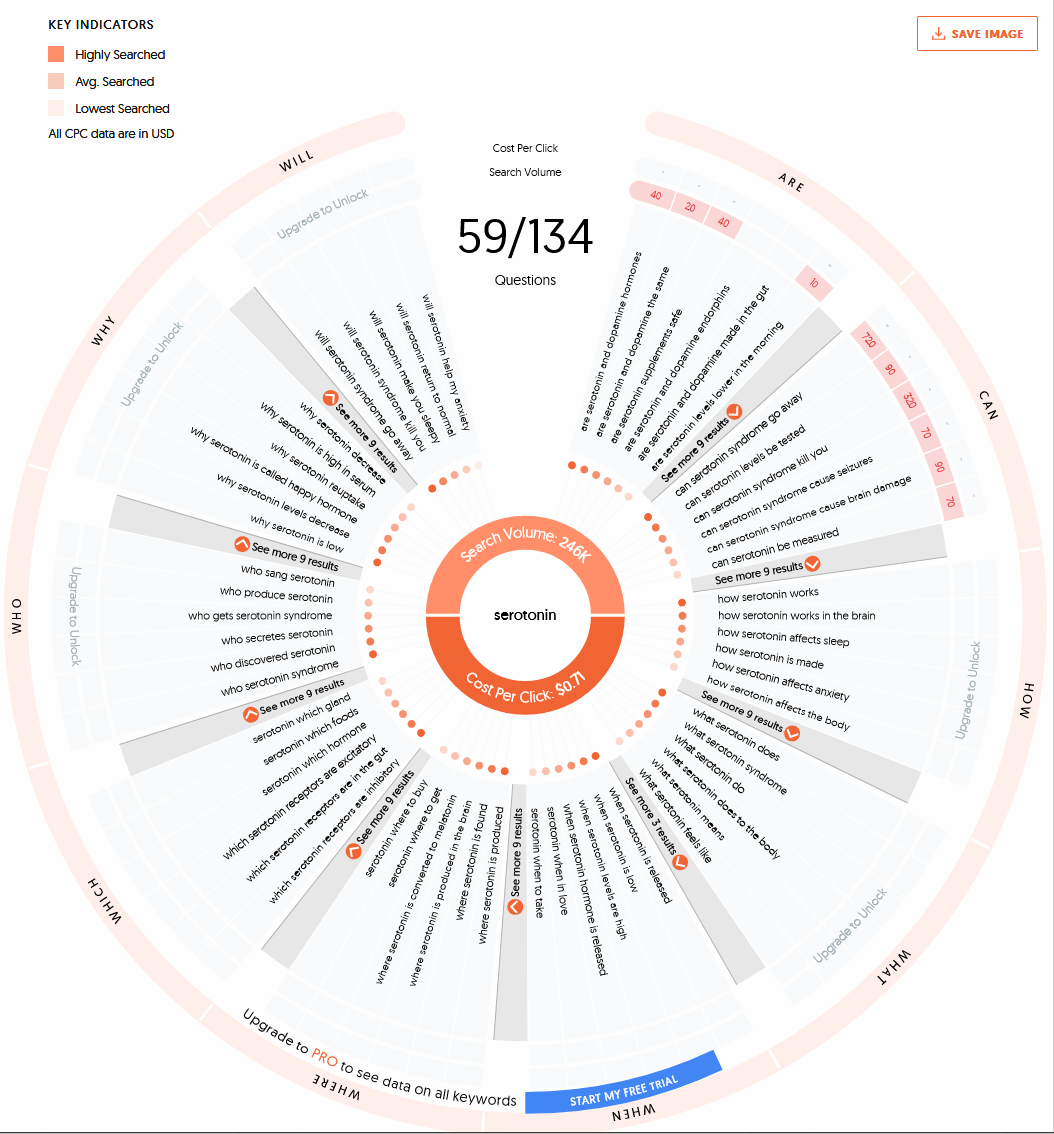By Alex Lessing, 4th year Computational Social Science and CogSci at UCSD
Generative artificial intelligence (AI) tools have significant potential for making the life science content creation process more efficient, including ideation, research, outlining, and optimizing. Presently, a variety of generative AI tools are available from different companies, including Open AI (ChatGPT), Perplexity AI (Perplexity) and Google (Gemini). To determine their individual strengths, weaknesses, and best use cases in life science content creation, we evaluated these AI tools with different prompts designed to test their abilities. Most of the outputs were similar, but there are a few key differences among the models that make them suitable for specific use cases.
A summary of these results can be seen in the table below, which compares how the models differ in noteworthy areas. Of course, these criteria have an element of subjectivity (particularly article writing), so many of these evaluations are not definitive. However, it is a fact that NotebookLM and Claude cannot access the internet, so they will perform poorly in tasks that require it.
Figure 1. Language model comparison
| Attribute | GPT-4o | Perplexity | Perpl. Pro | Notebook | Claude | Gemini |
| Response to Emotion | Higher | Low | Low | Low | Low | Low |
| Web Blog Finding | Good | Good | Good | N/A | N/A | Poor |
| Article Reading/Referencing | Good | Very good | Very good | Excellent | Good | Mediocre |
| Source Finding & Citing | Very good | Very good | Very good and proactive | N/A | N/A | Very good |
| Article Drafting w/ Sources | Very good: flows naturally | Good: concise | Good: concise | Good writing but no sources | Very good: natural and uses emotion | Decent writing but no sources |
AI-Enhanced Life Science Blog Creation Process
This AI-powered blog creation protocol provides a structured approach to developing high-quality, engaging content efficiently. By leveraging AI tools at each stage, from research and outline creation to writing and optimization, this process ensures consistent, impactful results. For a step-by-step overview of the protocol, see Figure 2, which details each phase of the workflow.
Figure 2. Tools used in protocol sequence

Step 1: Blog Topic Ideation
As this is a general starting point, any tool will likely work for thinking of ideas. Of course, the topic should be at least somewhat relevant to the author’s interests and knowledge, giving them a solid direction and more accurate evaluation of the models’ outputs. In this example, the blog will be about the neurotransmitter serotonin. (To optimize spatial efficiency, the previous phrase above will be represented as <topic> in prompts).
The blog should include relevant aspects of the topic that are currently popular, to increase its usefulness in educating the audience as well as its SEO. To determine these, the website Answer the Public was used.

The results were downloaded and included in a ChatGPT-4o prompt for brainstorming purposes.
Prompt: Using these keyword/search trends related to serotonin, brainstorm relevant points to touch on in a blog post about the neurotransmitter.
Step 2: Finding Resources
To support these points, sources will be needed. Perplexity, especially Perplexity Pro, is adept at this task, so it will be used here. ChatGPT-4o’s points were used, with some minor editing and synthesis to produce a more efficient list.
Example Prompt: Find reputable scientific articles that explain the following queries related to serotonin.
What is it?
What is its role in mental health?
What is its impact on physical health? (e.g. *serotonin syndrome*)
Natural methods to cultivate a healthier serotonin system?
Debunking common myths.
Serotonin vs dopamine?
Current research and future direction?
Step 3: Analyzing Resources
NotebookLM is excellent for retrieving details, as it strictly adheres to reference documents. The sources were downloaded and uploaded to Notebook, and citations were requested for the desired subjects, following the list. The user can browse through them and decide which provides the best support for their ideas. It’s worth noting that higher quality results were observed when asking about each subject individually, rather than compressing them into a list within a single prompt.
These prompts continue with the same formula until all subjects are addressed, and Notebook’s proposed citations are checked for relevance and quality. Additionally, interesting/noteworthy statements from the articles can be added to the future outlining prompt to ensure they are included.

Step 4: Backtracking
Although fortunately not seen in the current example, NotebookLM can help reveal when a subject’s sources do not support it adequately or directly enough. In this case, Perplexity Pro can simply be asked to find another source on the subject. This has worked well in previous tests.
Step 5: Outlining
ChatGPT-4o will be used for outlining, with the sources attached to the prompt.
Prompt: I am writing a blog about the neurotransmitter serotonin. Topics include:
-What is it?
-What is its role in mental health?
-What is its impact on physical health? (Must at least include: serotonin syndrome)
-Natural methods to cultivate a healthier serotonin system?
-Questioning common myths (Must at least include: how the precise relationship between serotonin and depression is still being studied and not proven. Serotonin levels in the bloodstream may not accurately reflect levels in the brain: Since it is currently impossible to measure serotonin levels directly in the human brain, researchers cannot be certain that increasing serotonin levels in the blood will also increase levels in the brain. Serotonin is likely not the only factor influencing mood and mental health; ‘happiness molecule’ is an overgeneralization. Simply eating foods high in tryptophan may not significantly boost serotonin levels.)
-Serotonin vs dopamine? (Must at least include: how Dopamine is primarily associated with the “wanting” aspect of reward, driving motivation and reinforcement. Not necessarily associated with pleasure, but rather with the pursuit of rewards. Serotonin appears to be more closely linked to the “liking” aspect of reward and plays a role in modulating mood and emotional responses. The two systems interact to shape our behavior. The sources indicate that the serotonin and dopamine systems are intertwined, with serotonin neurons capable of modulating dopamine release in brain regions associated with reward and motivation. This intricate interplay suggests that a balance between the two neurotransmitters is crucial for healthy emotional regulation and behavioral control.)
-Current research and future direction? (Must at least include: how understanding the relationship between the gut microbiome and serotonin production is an emerging area of research: The gut microbiome, the community of microorganisms living in the digestive tract, has been shown to influence brain function and behavior, potentially through its impact on serotonin production.)
Write an outline for the blog post that details these subjects in a sensible way, with ideas for expressions of them that would be interesting to the average reader. It should be accessible but professional. When making a claim, use one of the attached references to support it.
Step 6: Writing
While AI tools are valuable for generating ideas and structuring content, the final writing should be done by a human to ensure authenticity and credibility. Human writers bring nuance, personal insight, and a tone that resonates with readers—qualities that AI still struggles to fully replicate. By following the AI-generated outline but crafting the language carefully, a writer can create a piece that feels genuine, relatable, and trustworthy to the audience.
Step 7: Editing
ChatGPT-4o will be used to edit the blog for a second opinion. This is where any personally desired changes would also be requested.
Prompt: This is a blog written to clarify nuances of the neurotransmitter serotonin in a professional but accessible way. Provide suggestions for editing, and then implement them in a full rewrite.
Conclusion
In conclusion, leveraging AI tools can significantly streamline and enhance life science content creation. From ideation and research to outlining and editing, these tools provide support at every stage, allowing content creators to focus more on crafting authentic, engaging, and well-supported material. However, it’s essential to combine AI’s efficiency with human oversight and expertise, ensuring that the final content remains credible and resonates with readers. As this evaluation highlights, different AI models offer unique strengths, making them more or less suitable for various stages of the content creation process. By understanding these differences, life science writers can maximize each tool’s potential, producing content that is both high-quality and efficiently generated.








